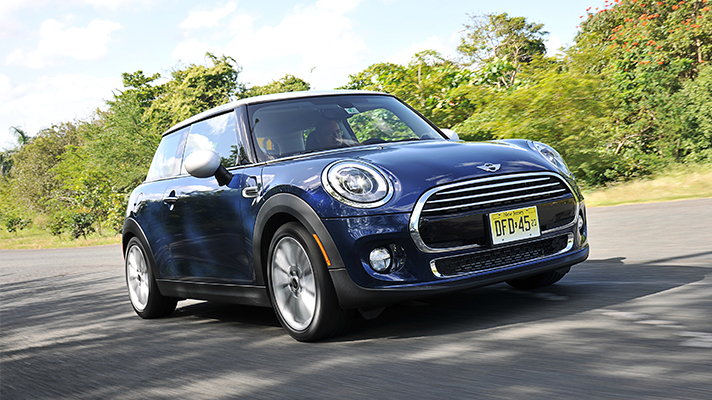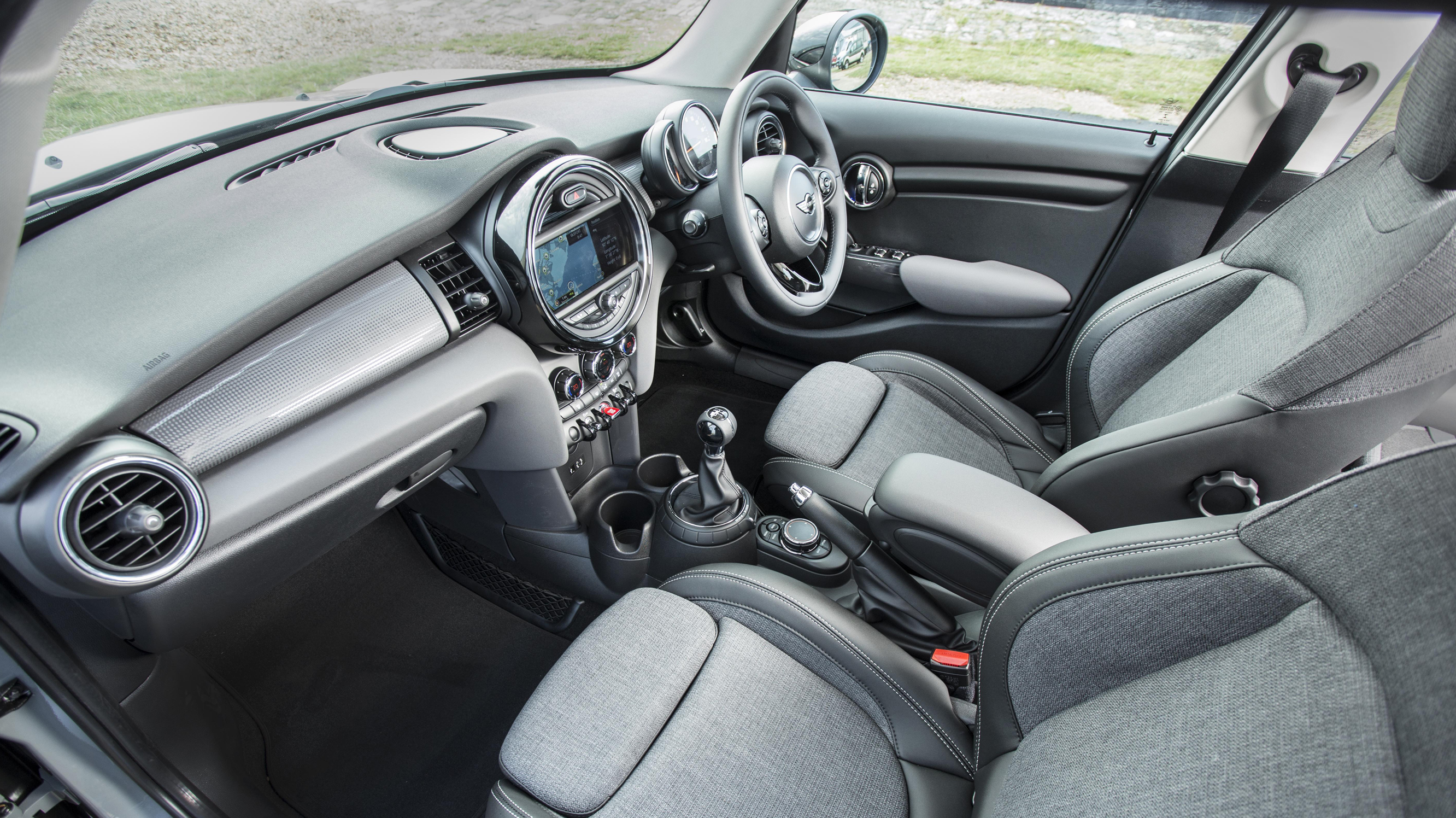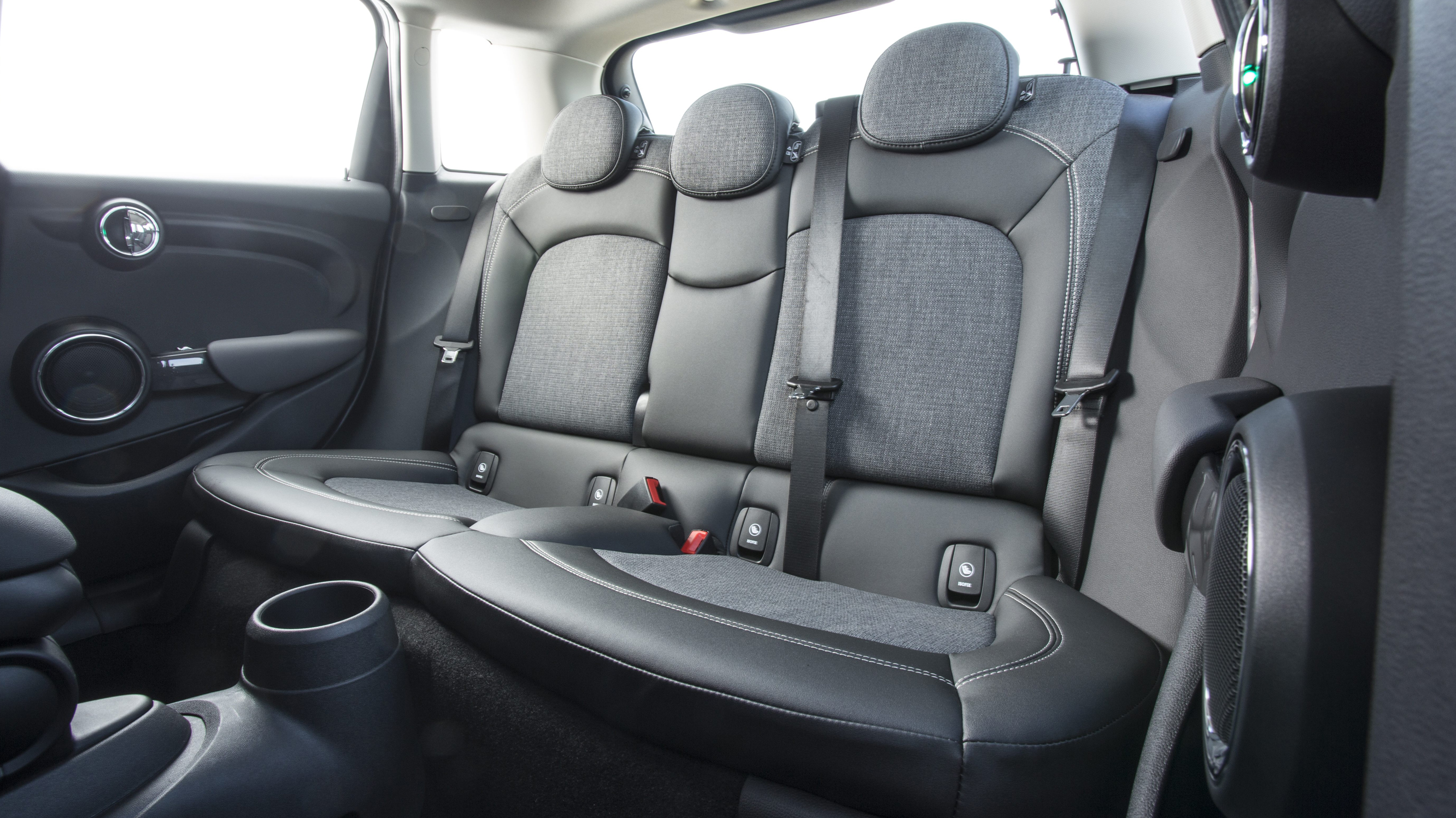
SPEC HIGHLIGHTS
- BHP
136bhp
- 0-62
7.9s
- CO2
105g/km
- Max Speed
130Mph
- Insurance
group18E
Even if at a glance, it looks like the past two generations with yet another case of middle-aged spread, this third-generation BMW Mini really is all-new. Nothing in the bodyshell is common with the outgoing one. The engines are all-new again, both petrol and diesel. Suspension follows the same principles as before, but all parts are different. Inside, it looks spookily familiar, but nothing has been carried over. You get the picture. That’s 14 years’ worth of progress, because the second-gen Mini, the one just departing, was largely based on the previous one, heavily facelifted and re-engined.
It doesn’t only look much the same as before, it also feels much the same on first acquaintance. That’s OK: I like Minis, and I’m not alone, as it’s been a huge and unexpected worldwide success. You’re in the same low-set driving position, legs straight ahead, as in a sports car. This, of course, is one reason the back seats are so tight. As before, the gearchange and major controls are all well-greased and react in satisfying proportion. The windscreen is upright and shallow. The ride is fairly firm and busy.
But don’t worry: there are differences. For a start, we have the all-new three-cylinder engine. This is part of a BMW family that includes the new Cooper S’s four-cylinder, and future sixes, and it’s even related to a similar line-up of diesels that’ll gradually be rolled out. As a 1.5-litre triple in the Cooper, it makes a useful 136bhp and has lots of turbocharged torque and very little lag. There’s plenty of room for development here, given a version of the same engine in the i8 makes almost another 100bhp.
Listen out, and you hear its fruity little burble, but this triple doesn’t vibrate the car at low revs, like some do. Give it some work to do, and it jumps to the task, with plenty of shove in the mid revs and a surge toward the red line. Unfortunately, that line is just at 6,500rpm, and a soft limiter seems to curtail your fun even sooner. Never mind – keep changing up, and it keeps scooting ahead, and you’re good for 0–62mph in 7.9secs. It’s an engine with far more character than the old Cooper naturally aspirated 1.6-litre. It’s also quiet at a cruise, because all that torque means it can sensibly pull the long sixth gear, which has it doing just 2,500rpm at 75mph.
The ride, too, is a welcome step ahead from the old Cooper’s. Yes, as before, it bobbles along with a busy bounce to its step. But the suspension has usefully more travel and control, so it doesn’t clang and thump into big bumps. It follows that it’s not only more peaceful in urban and suburban running, but also more serene when being flung down a bumpy and twisty back road. The old car sometimes felt like it was going to shake itself to bits.
That doesn’t mean the Mini has gone soft. Far from it. The handling is still urgent and agile. Probably more so. In tight corners, it swivels into the radius like a happy little hound, and if it’s a bit greasy and you’ve cut the DSC, you can even back off the throttle and loosen the rear tyres like a late-Eighties French hot hatch, except the whole enterprise is neater and less fraught. In faster bends, it’s still perky, but suitably stable and reassuring. It also hardly torque-steers or tramlines, partly because they improved the mechanical geometry of the suspension, and partly because there’s some unobtrusive correction from the electric steering assistance.
But what makes the new Mini so great isn’t just that it’s quick-witted and obedient or that it reacts in exact proportion to your commands. It’s that it plugs you into the action, playing you a sensory diorama through your hands and seat. Too many new cars are well-behaved but distant; the Cooper draws you in and tells you its secrets. That’s how Minis should be. I don’t know anyone who doesn’t like driving them.
The looks are more divisive. The designers have tried hard to keep it looking like a Mini but modernised, and also to disguise the body’s swelling. Maybe tried too hard, but then there’s always been a school of thought that BMW Minis were an overdesigned parody of their strictly functional 1959 ancestor. That, though, is a strictly British perception; elsewhere, they take it on its own terms. One perceptual trick is the extra creases around the wheelarches and the rear lights. Another is the rear lights themselves, which are huge so as to fool the eye into shrinking the car.
[[inlinegallery]]But the biggest difference is patently obvious when you look from a distant perspective, side-on. The formerly pert nose has given way to a far longer overhang, as a crash-protection measure. I asked BMW’s engineering chief if the extra conk is there to accommodate the crash boxes for the upcoming 2-Series Active Tourer, a car that shares its UKL modular platform matrix with the new Mini. He looked stern and said no, the UKL is about sharing design and construction principles, and things like drivetrains and electrics, but not actual internal body parts.
Anyway, the new Mini’s suspension is clearly appropriate for a Mini. It corners beautifully, but more quietly now. Plus the redesigned rear (still multi-link) is better-packaged, so the boot is deeper, making it a third as big again as before. Meanwhile, inside the cabin, the back seat is better but still tight. Tighter than almost all superminis.
Top Gear
Newsletter
Thank you for subscribing to our newsletter. Look out for your regular round-up of news, reviews and offers in your inbox.
Get all the latest news, reviews and exclusives, direct to your inbox.
As per outside, you wouldn’t sit in the cabin and think it was anything other than a Mini.
But the speedo dial has moved from that low-mounted central dinner-plate to a resting place above the steering column, where you can actually read it. The seats are new and rather excellent. The switches, many of them little chromed toggles, feel good, and the general quality of the furnishing plastics is a step up from before, too. Not at Audi levels of touch-and-feel, but the cheaper bits of plastic are disguised by their interesting design.
Yeah, I know, for some among us, ‘interesting’ is just a polite way of saying ‘cartoonish and juvenile’, but I can live with it. Mind you, once you start diving into the menus on the optional Mini apps, the extent of the cheese does break the bounds of acceptability: various kinds of fun-o-meter, and cutesy little screen graphics of a Mini with its engine bay emitting a thought-bubble containing a toy space rocket. Pur-leeze. Opinion will also divide on the huge LED ring that runs around the main central screen. Each of its segments can glow any colour. So, for instance, you can set it like a rev-counter, so the light ring chases around towards a red section at the four o’clock position. If you’ve got parking sensors, it illuminates more of its circumference as you approach an obstacle. It’ll do the same sort of countdown as the nav indicates you’re nearing a junction. Good stuff. But at other times, it just phases aimlessly and distractingly through the colours. And worse, it just looks cheap. Really cheap. If I were the component supplier, I’d be attaching little batteries and selling them as necklaces to festival goers.
The two screens have menus and displays for a panoply of electronic options, many new to small cars. Adaptive dampers, for a start, though I tried them only on a Cooper S, and they didn’t help much because the S was always too firmly sprung for the roads where we were. Also on the options list, the full navigation and connected apps suite that you can get on BMWs, albeit, as discussed, skinned in exceedingly Mini graphics. A driver assistance pack brings active cruise control and pedestrian recognition with active braking, plus speed-limit-sign recognition. You can also get a head-up display, projecting onto a glass panel that hinges up from the dashtop, like Peugeot has used for several years now. But in this case, it’s quite low in your line of sight so seems a bit pointless. Still, because most options are a bit inessential, the base car looks like it’s even stronger value.
One standard fitment is the warm feeling of rebalancing this country’s economy. Lots of British jobs here: panels pressed in Swindon; petrol engines made in Hams Hall, just west of Birmingham; and bodyshop and final assembly in Oxford. You can get an idea of the scale of the operation by the fact they’ve recently taken on 100 people at Oxford just to build the dashboards, which used to be bought in.
Or another example: because the new body shares nothing with the old, Oxford needed an additional bodyshop to weld it together, a spend of half-a-billion quid.
Something else that concerns Brits about the Mini is its physical size. In other countries around the world, they don’t give a stuff, but maybe because we remember the 1959–2000 original so well, we tend to get awfully het up about the fact that this thing isn’t mini any more. And, yes, the new one has swollen, and is about 80cm longer than the original (which is irrelevant, because everything has grown since the Fifties), and it’s about 30cm longer and a fair bit wider than today’s ‘small’ small cars, such as the Volkswagen Up, which happen to be as roomy. So you really have to see the new Mini as a coupe rather than a space-efficient hatchback.
If it’s a coupe, it has to be distinctive to look at and enjoyable to drive. And it is, so that’s alright, then.
Paul Horrell
1499cc, 3cyl petrol turbo, FWD, 136bhp, 170lb ft 62.8mpg, 105g/km CO2 0–62mph in 7.9secs, 130mph 1160kg £15,300
Featured

Trending this week
- Car Review
BMW 1 Series
- Top Gear's Top 9
Nine dreadful bits of 'homeware' made by carmakers







